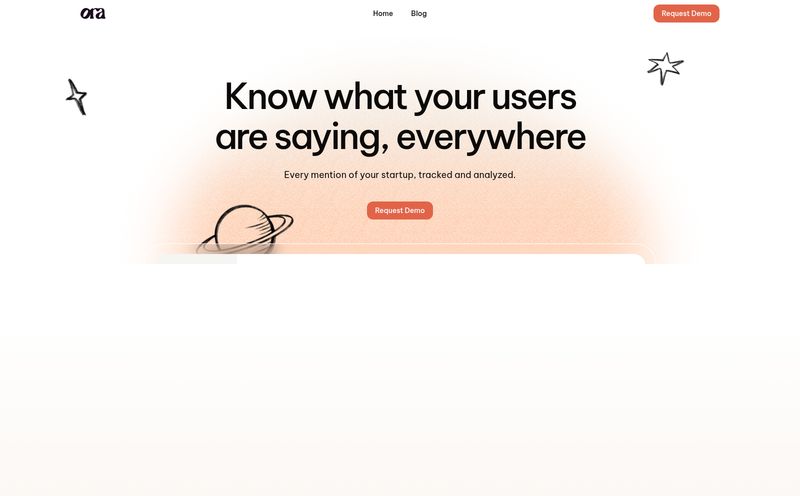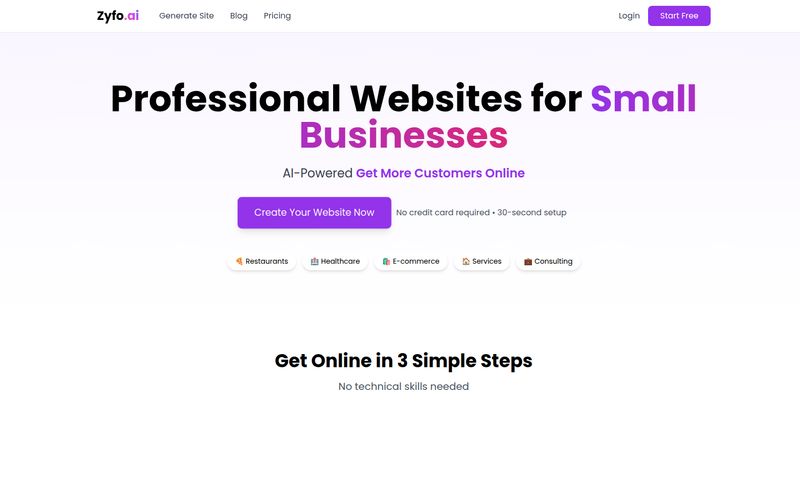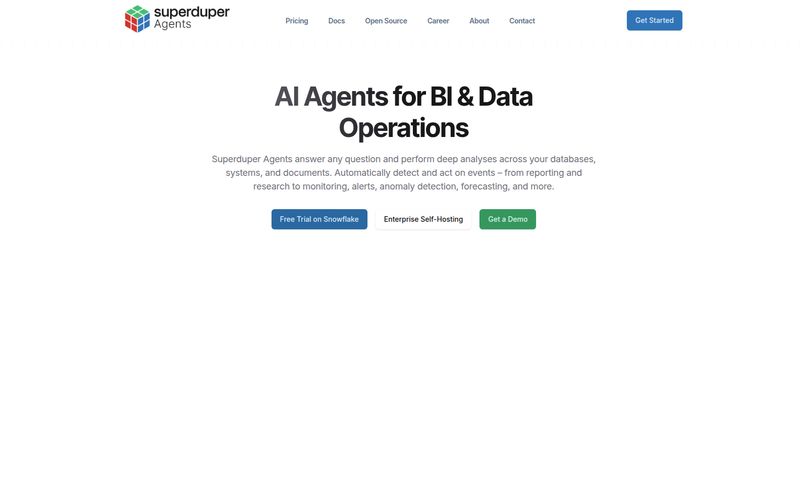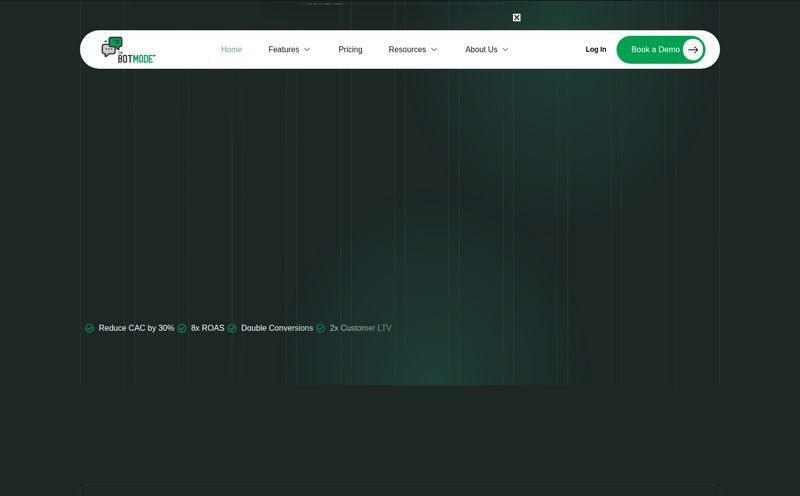In the world of SEO and digital marketing, we're bombarded with "game-changing" tools every single day. Every other email in my inbox promises to 10x my conversions or automate my entire life. Most of them? They're just repackaged ideas we've seen a dozen times before. So when I started hearing the buzz about Tidio and its AI-powered customer service, my professional skepticism kicked in. Hard.
Is this just another chat bubble that pops up and annoys your visitors? Or is it something… more? I’ve spent years knee-deep in traffic generation and conversion rate optimization, and I’ve seen what works and what just gets in the way. So, I decided to pull back the curtain on Tidio. Let's see if the hype is real.
So, What is Tidio, Really?
First off, calling Tidio just a "live chat" tool is like calling a smartphone just a "phone." It misses the whole point. Tidio positions itself as an all-in-one customer service platform, and from what I’ve seen, that’s a fair description. It’s a suite of tools designed to work together to handle customer interactions, from the initial “Hey, I have a question” to resolving complex support tickets.
At its core, it's built on a few key pillars:
- Live Chat: The classic, real-time conversation window with a human agent.
- Lyro AI Agent: This is their shiny AI chatbot, the supposed star of the show.
- Flows: A no-code visual builder for creating automated chat sequences.
- Help Desk: A ticketing system to manage and track customer issues, all from one inbox.
Think of it as a central command center for all your customer conversations, whether they come from your website, email, or even Instagram. That unified inbox idea alone is enough to make any stressed-out support team breathe a sigh of relief.
The Big Deal: Lyro, the AI Chatbot
Let’s be honest, most AI chatbots are… disappointing. They follow rigid scripts and the second you ask something slightly off-piste, they fall apart with a cheerful, “Sorry, I don’t understand!” It’s frustrating for the customer and looks bad for the business.
Tidio claims their AI, Lyro, is different. It’s designed to learn from your existing FAQ content and knowledge base to provide natural, helpful answers. It's not just following a script; it's supposedly problem-solving. The platform boasts that Lyro can handle up to 70% of customer issues on its own. That’s a bold claim.
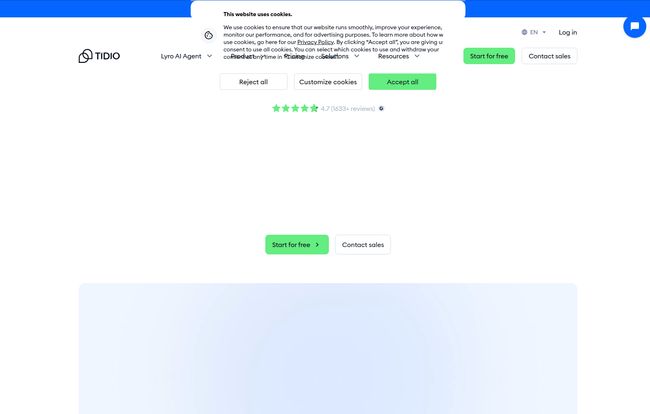
Visit Tidio
But Can It Really Sound Human?
This is the million-dollar question, isn't it? The goal is to create conversations that feel human, not robotic. According to Tidio’s own stats, using their system can free up a sales team to focus on 28% more strategic work. That’s a metric I can get behind. It's not about replacing humans, but about augmenting them—handling the repetitive stuff so your team can tackle the high-value conversations. In my experience, the best AI doesn't try to trick you into thinking it's a person. It's just so good at being helpful that you don't care.
Automating Without Code: A Look at Tidio Flows
Now this part is genuinely cool, especially for small businesses or solopreneurs who don't have a developer on standby. Tidio Flows is a visual drag-and-drop editor. It’s like building with digital LEGOs. You can create automated conversation paths for all sorts of scenarios.
Imagine this: a visitor lands on your pricing page and hesitates for 30 seconds. A Flow can trigger a chat to pop up automatically, offering a discount code or asking if they have any questions. Or someone abandons their cart? A Flow can engage them, find out why, and maybe even salvage the sale. This is proactive customer service, and you dont have to write a single line of code to set it up. It’s powerful stuff for lead generation and reducing cart abandonment, two of the biggest headaches in e-commerce.
The Nitty-Gritty: My Honest Take on Tidio
Alright, no tool is perfect. Let's break down the good and the not-so-good based on my poking around and industry experience.
What I Genuinely Like
The free plan is a fantastic starting point. It’s not a gimmick-y trial; you can genuinely use it forever for a low volume of chats. This lets you get a real feel for the platform before you commit. The all-in-one inbox is a massive win for efficiency. Juggling between email, Facebook Messenger, and website chat is a recipe for disaster. Having it all in one place is just... smart. And I have to give them props for the no-code Flows builder. It democratizes automation, putting powerful marketing tools in the hands of non-technical users.
Where It Could Be Better
Look, the AI is only as good as the data you feed it. If your FAQ page is a mess, Lyro is going to be a mess. Garbage in, garbage out. That's not Tidio's fault, but it's a reality users need to understand. Also, as you'd expect, the really powerful features—like the full-strength Lyro AI—are locked behind teh paid plans. That’s just business. Finally, while the Flows builder is “no-code,” building a truly complex and effective flow requires some strategic thinking and a bit of a learning curve. Don’t expect to master it in five minutes.
Let's Talk Money: Tidio Pricing Breakdown
Pricing can make or break a tool, so let’s get into it. Tidio's pricing page can feel a little complex at first glance because they offer different packages based on your needs. My advice? Grab a coffee and look at their site directly, as these things change. But here's a simplified breakdown of the general structure I've seen.
| Plan Tier | Who It's For | Key Feature |
|---|---|---|
| Free | Startups & very small businesses just getting started. | Basic live chat (50/mo) and a taste of chatbot automations. |
| Starter / Growth | Growing businesses that need more power and want to use AI. | More conversations, access to Lyro AI, more integrations. (Starts around €29-€49/mo) |
| Premium / Tidio+ | Larger teams and enterprises needing the full suite and priority support. | Highest limits, advanced analytics, dedicated support. (Pricing is higher/custom) |
Note: Pricing is subject to change. Always check the official Tidio website for the most current information.
Who is Tidio Actually For?
After digging in, I have a pretty clear picture. Tidio is a near-perfect fit for small to medium-sized e-commerce businesses. The features for cart abandonment, lead generation, and handling common product questions are spot-on for that market. It’s also great for any service-based business that gets a lot of repetitive inquiries and wants to provide instant answers 24/7 without hiring a massive support team.
Who is it not for? Probably massive, global enterprises that need incredibly deep, custom-coded integrations with proprietary legacy systems. They usually have in-house teams for that. But for the other 95% of businesses? Tidio is a very, very strong contender.
Conclusion: Is Tidio Worth the Hype?
So, back to my original question. Is Tidio just another chat widget? Absolutely not. It's a surprisingly robust and well-thought-out platform for customer communication. The leap from a simple contact form to a tool like Tidio is significant.
It’s not a magic wand that will solve all your problems, but it’s a powerful ally. It empowers businesses to be more responsive, more efficient, and more proactive. The blend of human-led live chat and AI automation is where the magic really happens. If you’re feeling overwhelmed by customer inquiries or feel like you’re missing out on leads, I’d say giving Tidio’s free plan a spin is a no-brainer. It might just be the command center you’ve been looking for.
Frequently Asked Questions
1. Is Tidio really free?
Yes, Tidio offers a Free plan that you can stay on forever. It includes core features like live chat (for up to 50 unique conversations a month) and basic chatbot functionalities. More advanced features and higher conversation limits require upgrading to a paid plan.
2. How good is Tidio's AI chatbot, Lyro?
It's quite impressive, but its effectiveness is directly tied to the quality of the information you provide it. When fed with a comprehensive and well-structured FAQ or knowledge base, it can successfully handle a large percentage of common customer queries, freeing up human agents for more complex issues.
3. Can I use Tidio with Shopify or WordPress?
Absolutely. Tidio has seamless integrations with all major e-commerce and website platforms, including Shopify, WordPress (WooCommerce), Wix, Squarespace, and many more. Installation is typically very straightforward, often just requiring a simple plugin or app.
4. Do I need to know how to code to use Tidio Flows?
Nope! That's one of its biggest selling points. Tidio Flows uses a visual, drag-and-drop editor. If you can create a simple flowchart, you can build an automated conversation in Tidio. No coding knowledge is required.
5. What's the difference between Tidio's live chat and its AI chatbot?
Live chat connects your website visitors directly to a human agent for a real-time conversation. The AI chatbot (Lyro) is an automated system that provides instant answers 24/7 by drawing information from your knowledge base, handling common questions without human intervention.
6. Is Tidio good for lead generation?
Yes, it's very effective for lead generation. You can use Flows to proactively engage visitors, ask for contact information in exchange for a discount or resource, and qualify leads automatically before they even speak to a salesperson.
